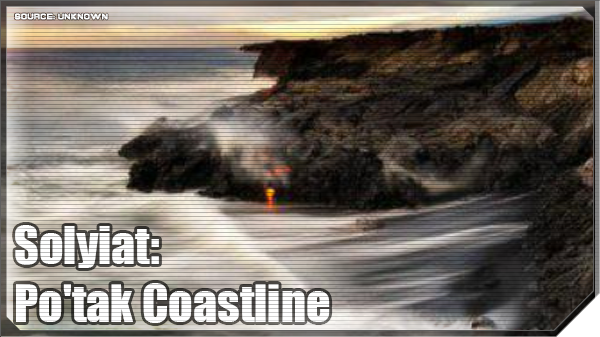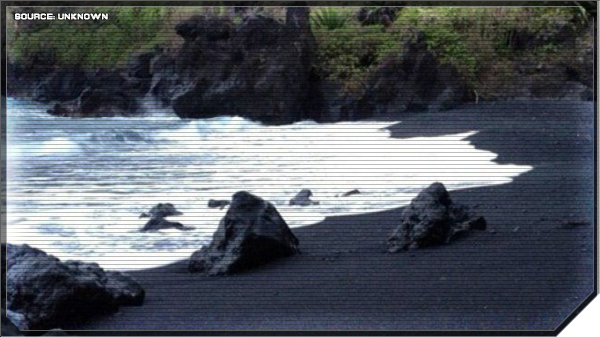
Po’tak, part of the Pokora island chain, is an island home to a diverse tropical wildlife and its landscape is dominated by its two active volcanoes, which create molten lava flows towards its coasts. These streams funnel into two major rivers of lava, which are mostly parallel to each other, that empty out into the sea, creating pillars of steam. During the height of an eruption and if the winds are right, the hot airborne ash and the thick steam from the coast cause reduced visibility, making travel dangerous. Adjacent to the lava flows, lava tubes have formed from the remnants of previous eruptions and the relentless hot, sunny days. These tubes vary in thickness and are generally dangerous to walk across due to cave ins, which sometimes cause visitors to fall into the underlying cave system created by the lava streams themselves. The caves have varying depths and stability, sometimes even collapsing into deeper undiscovered lava tubes, and can also be full of magma.

If one makes it down to the eastern or western ends of the coastline, they will find what are called “Black Beaches”, remnants of ancient lava flows long dead. During the hottest days, the black, sun-baked sand is uncomfortable with little respite from the nearby sea, which is dangerous to swim in due to strong riptides and sharp obsidian beneath the surface. Despite this, sea turtles, birds, and giant rock cracker crabs nest on the beaches. Of note, the crabs are the largest arthropod on Solyiat, weighing up to 6 kg and growing up to 1.5 meters in length from leg to leg. This omnivore’s claws can crack open small rocks, but thankfully they only eat meat if other food sources are not available and the opportunity presents itself. Rumors abound that local pirates use said giant rock cracker crabs as a means of torture or even murder.
From the tallest peak of the island, one can see both the surrounding islands and a few anchialine pools, bodies of water that are fed underground by the nearby sea, near coastline coves such as Punalu’u and Ninole. These pools rise and fall with the tides, sometimes even allowing one to traverse the vast subterranean cave system feeding it. Visitors are highly discouraged from exploring them due to sharp, slippery rocks and the unpredictable return of high tide. Some explorers have claimed to survive the ordeal through the creation of air pockets or the existence of underground pools but this has yet to be confirmed. In addition, the island has a wet season consisting of day long rain storms and hurricanes, both of which could cause coastal flooding, landslides, and collapsing lava tubes.